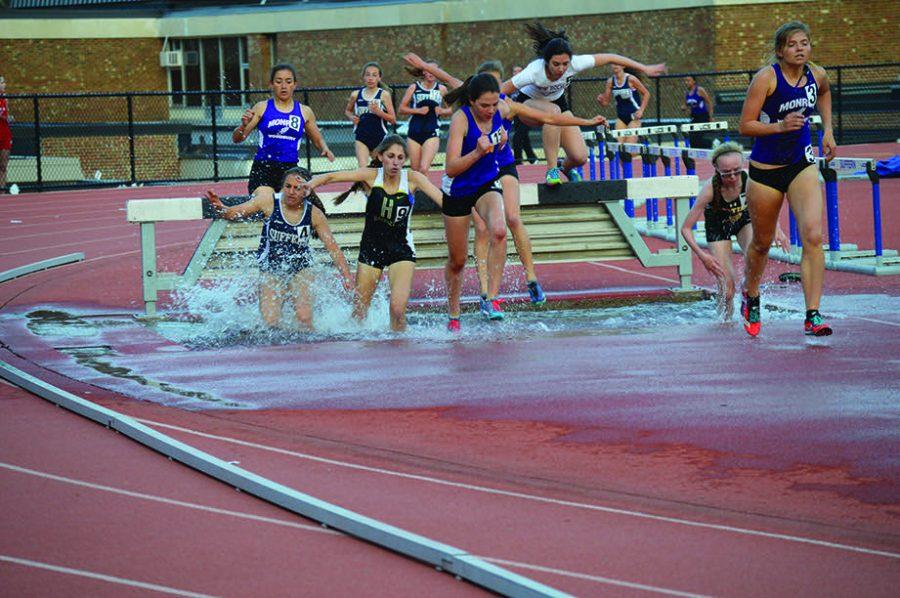Hackley Track and Field Races the Thrilling Steeplechase
Credit: Akash Samad
Senior Lindsay Schechter jumps over the wet barrier in the steeplechase at the Suffern Invitational.
May 30, 2016
While watching a track meet, one might wonder what is going on as runners come through the line soaked and exhausted. As they look across the track, just inside the first lane they might notice a water pit and people stumbling over a black and white hurdle causing a trainwreck of runners struggling to make it to the finish. They soon discover that this fun spectator sport is actually a track event. It is the steeplechase.
Although most people know that track and field consists of running, jumping, and throwing events, fewer people outside of the running community are aware of the steeplechase, a true test of athleticism which combines running and jumping into this one arduous discipline.
Despite the challenges that it presents for athletes, the steeplechase is freshman and avid steepler William Crainer’s favorite event, as it “combines the fun of running and racing with the thrill of hurdling over the barriers and jumping over the water pit.” He enjoys the sense of accomplishment that the steeplechase provides. “When you finish it is a much greater sense of accomplishment than just running a 2000 or 3000 because you have [completed] it with barriers. The feeling of running the steeple is one unmatched. It burns your legs and you can feel the adrenaline pumping through your body,” he said.
In this race, which originates from the popular steeplechase contested on horseback in Europe, competitors run either a 2k or a 3k (just over five laps around the track or seven-and-a-half laps) while clearing hurdles and one water barrier each lap. In a 3k race, runners face 28 dry barriers and seven water barriers throughout the race, while in the shorter 2k event, runners jump 18 hurdles and clear five water jumps.
The steeplechase proves to be particularly strenuous, as competitors not only need the endurance to run these distances, but must also have the strength to continue to jump over the barriers. The hurdles are taller than those in a shorter hurdling event and the water barriers present a particularly difficult obstacle. While most athletes tend to jump over the dry barriers, the wet barriers generally require a different strategy.
These water pits are usually a few feet right underneath the hurdle and become more shallow further away from the jump. Runners jump on top of the hurdle, push off, and try to clear the most distance possible in an attempt to stay dry. Oftentimes, this is hard to do and athletes may fall in the water or get splashed by water making it tricky and tiring to complete the rest of the race. Spectators frequently flock to the water barrier to watch runners tackle this obstacle as it proves particularly entertaining.
Junior Akash Samad enjoys competing in this event as well. “Having confidence in yourself and your ability to get over the steeple are some of the most important qualities for athletes running the steeple,” he said. He divides the event up into three stages: the first being fear, the second, a feeling of confidence after clearing the first barrier, and finally a sense of accomplishment after finishing the race. He also added that “the mindset [he] has towards steeple helps him off the track, teaching the importance of effort and that pushing through gets you where you want.”
Given the determination and willpower required to run the steeplechase, excelling in this event is a very impressive feat. This year at Track and Field’s NYSAIS Championships on Wednesday, May 25, several Hackley runners ran and placed in this event, scoring points for the team. Senior Julia Stevenson is exceptionally talented in this race, and has competed at the national level.
Overall, it is a very exhilarating event for both spectators and athletes.

